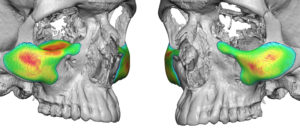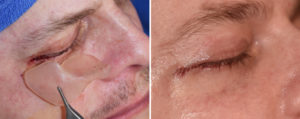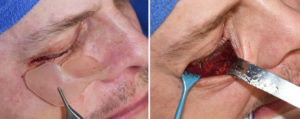Background: Few faces are perfectly symmetric and most of us have some noticeable differences between the right and left sides. Such facial side differences are usually well tolerated or may not even be known. We all recognize that ‘no one is perfect’ and everyone has a little bit of facial asymmetry which is seen within the range of normal.
But asymmetry of the eyes is often different because it is so easily recognized and almost impossible to visually ignore. While there are different types of eye asymmetry, many of which are related to the eyelids, one of the most recognized causes of is that of orbital dystopia. Orbital dystopia is bone-based with the orbital bony box being at different levels between the two sides. The most common type of orbital dystopia is vertical and the affected side is almost always lower than the normal side.
In vertical orbital dystopia, the affected eye sits lower which can be seen and measured by the horizontal positioning of the pupil of the eye. The eye sits lower because the orbital floor, including the circumferential orbital rims and cheek bone, sit lower. In more minor cases the orbital dystopia is isolated to the eye area. But in more significant cases the entire side of the face from the eyebrows down to the jawline is lower.




Highlights:
- One cause of eye asymmetry is a malpositioned orbital box which causes the eye to sit at a lower horizontal level than the normal side.
- Orbital floor and infraorbital rim augmentation is one technique in the treatment of vertical orbital dystopia but it will not correct every aspect of the eye asymmetry.
- The orbital floor-rim augmentation implant is best made from a 3D CT scan in a custom implant fashion.
Dr. Barry Eppley
Indianapolis, Indiana




